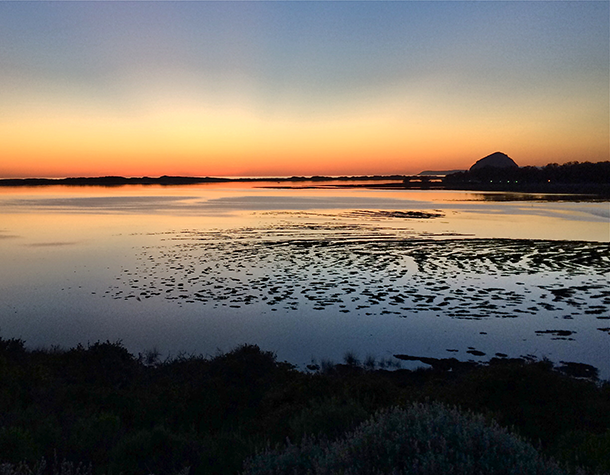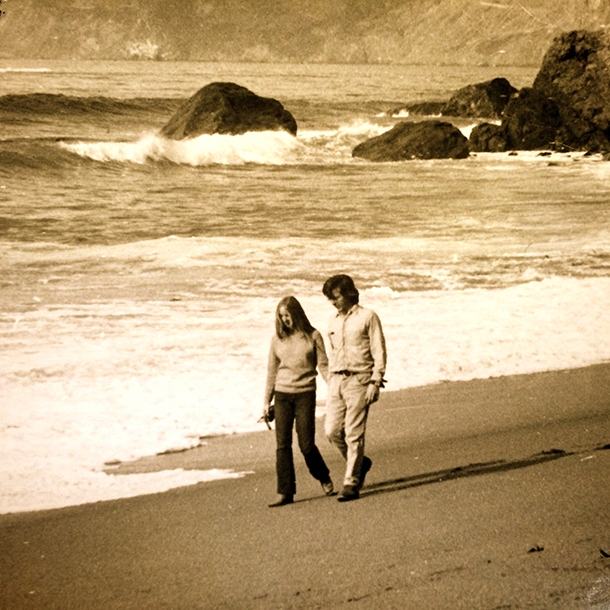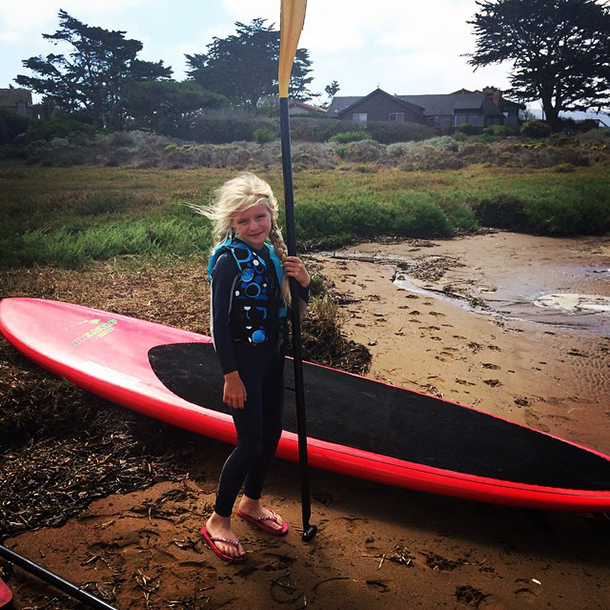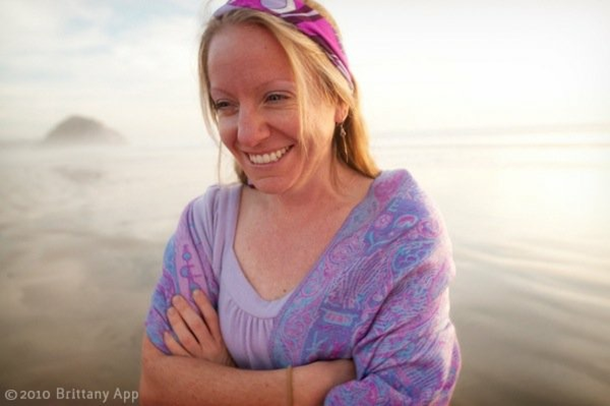The Place Where You Live: Morro Bay, California
Air Date: Week of April 8, 2016

The calm waters of the estuary reflect a colorful sunset (Photo: Lauren Platte)
Living on Earth is giving a voice to Orion Magazine’s longtime feature in which readers write about their favorite places. In this week’s edition, Lauren Platte takes us to Morro Bay on the California coast, where the estuary is a refuge for people and wildlife alike.
Transcript
CURWOOD: We head off to the California now, for another installment in the occasional Living on Earth/Orion Magazine series “The Place Where You Live.” Orion invites readers to put their homes on the map and submit essays to the magazine’s website, and now we’re giving them a voice.
[MUSIC: Edward Sharpe and The Magnetic Zeroes “Home” from Edward Sharpe and The Magnetic Zeroes (Rough Trade Records 2009)]
CURWOOD: There’s a watery theme in today’s show – and this essay fits right in…
PLATTE: I'm Lauren Platte and this is my essay about the Morro Bay Estuary.

The Platte family at the Morro Bay estuary (Photo: Lauren Platte)
From above, the Estuary of Morro Bay looks like a primeval lung, chambered and channeled, spongy marsh and slick black mud. It exhales nutrients and minerals of land into sea in clouds of silt, the tide swelling and sucking. A slow, susurrus breath.
[SOUNDS OF BLACK BRANT, AND SEA WASH]
When Black Brant land in legions you hear their social gabble, guttural and constant, borne across the water on salt-soaked air. They drift in great raucous rafts, mingling with other wet-winged mariners. Ancestral spirits gathering.
Great-Granddad called this place his Innisfree. He and Great-Grandma-Mom migrated here from North Hollywood in the 1950’s, and the family, flocking, followed them. Ancient Estuary became new homeland. Our heartland.

Platte’s parents were married at the estuary in 1970. (Photo: courtesy of Lauren Platte)
[MUD SOUNDS, SEAWASH, SEABIRDS]
As a child I sank barefoot, knee-deep, into this sponge. Squished mud between toes. Grew to recognize the glimpse of eternity when starlight glimmers upon the glassy mirror of a spring tide. To feel the whispered, billowing sigh as I am absorbed.
Embedded in its flesh, I’ve grown as much a part of this organism as the marsh grass, one with ebb and flow.Whether by call of seabird, magnetic migratory pull, or by surging breath of tide, I too have been drawn back into the land of my birth. I’ve borne my own children here, raising the fifth generation of our blood in this mud.
[CHILDREN PLAYING]
Singing prayers to the stars that they too may set their children’s feet on this land one day. That the Estuary will still respire, each inhalation teeming with life. Our homeland. Our heartland. Breath of this body. Center of the soul.

Platte’s daughter enjoys paddle boarding at the estuary (Photo: Lauren Platte)
[MUSIC: Vitamin String Quartet, "Home," Tribute to Edward Sharpe and the Magnetic Zeros, Modern Wedding Collection II (Vitamin Records 2013)]
PLATTE: My great-grandfather was a retired English professor and college counselor. He called this place Innisfree in reference to a poem by William Butler Yates. And to me the meaning is that of a refuge, a place of peace where people can come and live a simple live with the natural world. It's a place of refuge for others, too, not just us, but it's an important layover site for migratory birds every year, primarily the Black Brant and other geese who come in droves, the Cinnamon Teal, the Hooded Merganser, the white pelicans, many visitors that come to this place every year on their journey south.
[BIRDS]
My son, he just turned four and my daughter just turned nine. We love to take them out on kayaks, on standup paddleboards. My husband has a fishing boat so they'll go out on the estuary and just catch and release.

Platte’s 4-year-old shares a silly moment while out paddle boarding on the bay (Photo: Lauren Platte)
[WATER SPLASHING]
SON: Whoa, it's big.
PLATTE: It has really become a part of their childhood too. Unfortunately things are changing now, a long awaited sewer is being built in our town and with it will come a lot more building and development. So I feel like the more of us who connect with this place, the longer it will exist as a healthy ecosystem and be protected.
[MUSIC: Vitamin String Quartet, "Home," Tribute to Edward Sharpe and the Magnetic Zeros, Modern Wedding Collection II (Vitamin Records 2013)]

Lauren Platte lives in Baywood Park, California near the Morro Bay estuary. (Photo: Brittany App)
CURWOOD: Lauren Platte, and her much-loved home at the California shore. You can tell us about the place where you live if you like. There’s more about Orion Magazine and how to submit your essay at our website, LOE.org.
Links
Read Lauren Platte’s full essay on the Orion Magazine website
Living on Earth wants to hear from you!
Living on Earth
62 Calef Highway, Suite 212
Lee, NH 03861
Telephone: 617-287-4121
E-mail: comments@loe.org
Newsletter [Click here]
Donate to Living on Earth!
Living on Earth is an independent media program and relies entirely on contributions from listeners and institutions supporting public service. Please donate now to preserve an independent environmental voice.
NewsletterLiving on Earth offers a weekly delivery of the show's rundown to your mailbox. Sign up for our newsletter today!
 Sailors For The Sea: Be the change you want to sea.
Sailors For The Sea: Be the change you want to sea.
 The Grantham Foundation for the Protection of the Environment: Committed to protecting and improving the health of the global environment.
The Grantham Foundation for the Protection of the Environment: Committed to protecting and improving the health of the global environment.
 Contribute to Living on Earth and receive, as our gift to you, an archival print of one of Mark Seth Lender's extraordinary wildlife photographs. Follow the link to see Mark's current collection of photographs.
Contribute to Living on Earth and receive, as our gift to you, an archival print of one of Mark Seth Lender's extraordinary wildlife photographs. Follow the link to see Mark's current collection of photographs.
 Buy a signed copy of Mark Seth Lender's book Smeagull the Seagull & support Living on Earth
Buy a signed copy of Mark Seth Lender's book Smeagull the Seagull & support Living on Earth

